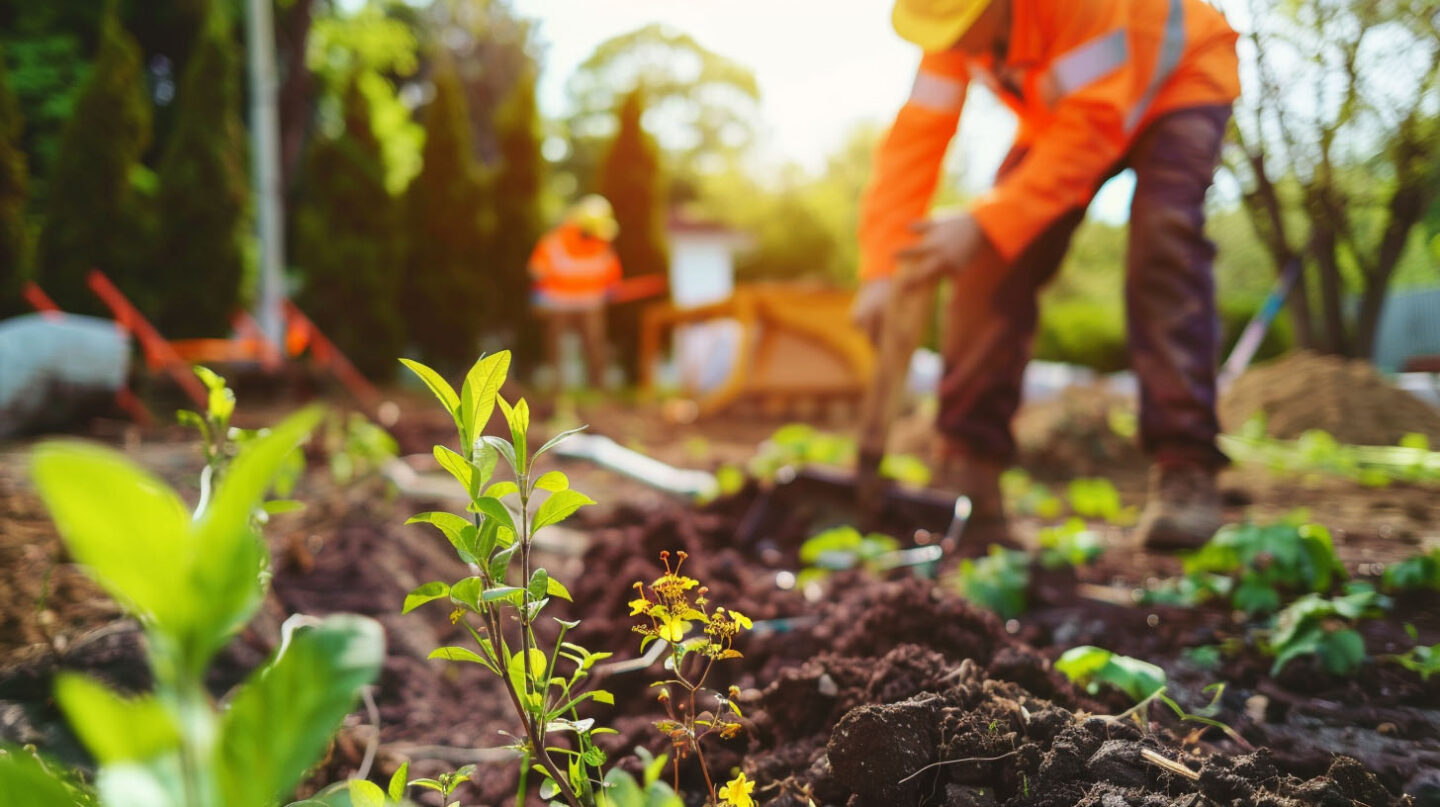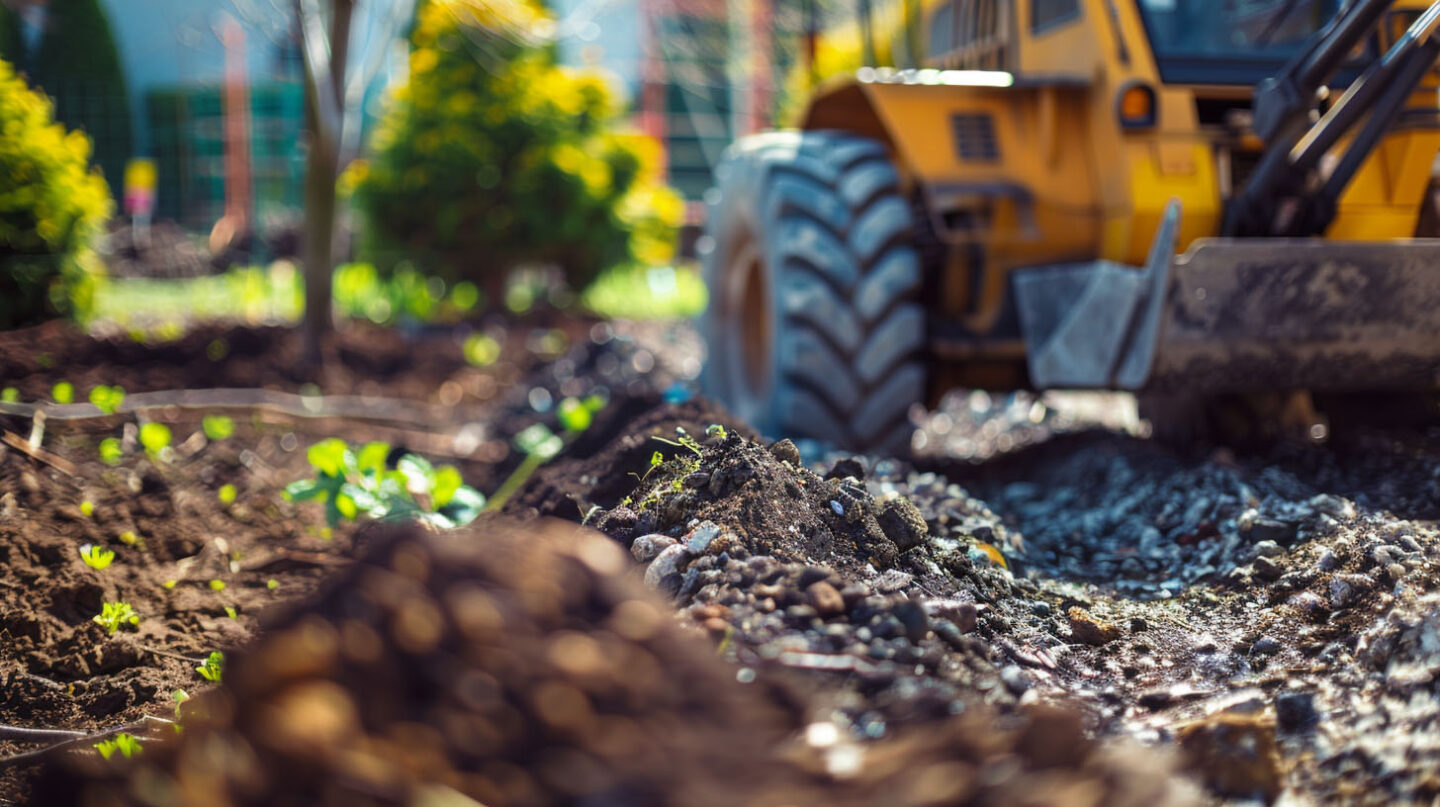Getting a new roof is exciting, but you might worry about what the process means for your beautiful yard. How can you ensure your garden survives the tear-off and installation? As your local, family-owned roofing contractor, The Shingle Master is dedicated to not just your roofing needs but also the overall protection of your property. With years of experience, we understand that protecting your home means ensuring that every aspect of your landscaping is safe throughout the roofing process. Our team is well-versed in industry best practices, allowing us to handle your project with care and precision. We pride ourselves on providing you with peace of mind, knowing that your landscaping is in capable hands in Cary, NC.
Why Landscaping Protection Matters During Roof Tear-Offs
During a roof replacement project, landscaping often becomes vulnerable to damage. Heavy equipment can lead to soil compaction, impacting roots and delicate plants. Falling debris presents another risk, potentially harming flower beds and outdoor furniture. By paying close attention to these factors, professional roofers can implement protective measures that ensure a seamless customer journey. Prioritizing landscaping protection not only preserves the aesthetic value of outdoor spaces but also grants homeowners peace of mind throughout the roofing process.
Common Risks to Lawns, Gardens, and Outdoor Features
During roof replacement projects, numerous risks threaten the integrity of lawns, gardens, and outdoor features. Falling debris from the upper structures poses a significant hazard, particularly in delicate areas such as flower beds and shrubbery. Soil compaction is another concern, often exacerbated by heavy equipment traversing vulnerable zones. Additionally, errant foot traffic and misplaced delivery trucks can easily damage well-maintained landscaping. Implementing protective measures is essential to mitigate these risks and ensure a seamless customer journey throughout the roofing process.
Impact on Plants, Shrubs, and Trees Around the House
During a roof replacement project, the potential impacts on surrounding plants, shrubs, and trees can be significant. Falling debris and heavy foot traffic during the installation of underlayment can damage delicate areas, leading to stress or even loss of vegetation. Professional roofers must assess these vulnerable areas in advance, implementing protective measures such as drop cloths or plywood sheets to minimize harm. By prioritizing these considerations, homeowners can enjoy peace of mind knowing that their landscaping is safeguarded throughout the roofing process.

Key Steps Roofing Contractors Take to Safeguard Landscaping
A thorough site assessment is crucial for roofing contractors to identify vulnerable areas that may be impacted during the roof replacement process. Custom protection planning follows, employing protective coverings such as tarps and plywood sheets to shield delicate items like flower beds. Communication between the roofing crew and homeowners fosters a seamless customer journey, ensuring that any landscaping concerns are addressed. These collaborative efforts contribute significantly to the overall safety considerations and the successful roofing project outcome, providing homeowners with peace of mind.
Site Assessment and Custom Protection Planning
A thorough site assessment is crucial for identifying vulnerable areas in need of protective measures before the roofing project begins. Engaging in a collaborative approach, roofing contractors can formulate a custom protection plan that considers the specifics of the location, including garden beds, flower beds, and delicate outdoor features. This initial inspection paves the way for a successful roofing project, ensuring that the installation of underlayment and other materials occurs with minimal disruption, ultimately providing peace of mind for homeowners.
Communicating Landscaping Concerns with Homeowners
Effective communication between roofing contractors and homeowners is vital for a successful roofing project. Discussing landscaping concerns upfront helps identify vulnerable areas that need extra care, ensuring a seamless customer journey. By addressing potential risks such as falling debris and foot traffic, contractors can collaboratively develop a protective plan that fortifies flower beds and delicate areas. Regular updates during the roof replacement process help maintain peace of mind, allowing business owners and homeowners to focus on their roofing goals without unnecessary headaches.
Choosing the Right Protective Materials and Coverings
Using the right protective materials and coverings is essential for effective landscaping protection. Not all tarps are created equal; a thin plastic sheet won’t stand up to falling asphalt shingles or stray nails. Professional roofers use heavy-duty, industrial-grade protective coverings designed to withstand the demands of a roofing project.
Choosing the best option depends on what’s being protected. A breathable fabric might be ideal for delicate plants, while sturdy plywood is better for creating walkways over the lawn. This extra layer of protection is your landscape’s first line of defense.
Using Tarps, Plywood, and Specialty Fabrics
Employing tarps, plywood, and specialty fabrics serves as essential protective measures during a roof replacement project. Tarps are lightweight yet effective, shielding delicate flower beds and outdoor furniture from falling debris and stray nails. Plywood sheets create a solid barrier for high-traffic areas, reducing the chances of soil compaction and damage to root systems. Utilizing these protective coverings enhances the level of care taken by roofing contractors, ensuring a seamless customer journey and peace of mind throughout the roofing process.

How Mulch and Temporary Barriers Protect Flowerbeds
Mulch and temporary barriers serve as crucial layers of protection for flowerbeds during a roof replacement project. A well-installed mulch layer not only retains moisture but also reduces soil compaction, safeguarding delicate root systems from heavy foot traffic and falling debris. Meanwhile, temporary barriers create a defined work zone that minimizes exposure to stray nails and construction materials. Utilizing these protective measures ensures that landscaping remains unharmed, allowing for a seamless customer journey and peace of mind throughout the roofing process.
Managing Heavy Equipment and Material Placement
Without a thought-out plan, you could end up with a cracked driveway or deep ruts in your lawn, creating unnecessary headaches. A professional contractor thinks ahead to determine the safest and least intrusive locations for these heavy items.
Heavy Machinery on Driveways and Lawns—Best Practices
Implementing best practices for heavy machinery on driveways and lawns is essential for safeguarding landscaping during roofing projects. Ensuring the use of plywood sheets or mats can provide a protective layer, minimizing soil compaction and preserving root systems. Designers should prioritize vulnerable areas, directing heavy equipment away from delicate garden beds and flower plots. Relying on experienced roofing crews to manage machinery movements fosters a seamless customer journey and enhances project efficiency, while contributing to peace of mind for homeowners.
Preventing Soil Compaction and Damage to Root Systems
Soil compaction presents a significant threat during roofing projects, particularly in areas with delicate root systems. Implementing protective measures, such as strategically placing plywood sheets to distribute weight, can mitigate potential damage. Additionally, limiting foot traffic in vulnerable areas ensures that roots remain undisturbed. Professional roofers understand the importance of protecting the soil’s integrity, allowing for a seamless customer journey during the roof replacement process. By prioritizing these best practices, peace of mind is achieved for homeowners concerned about their landscaping.

What’s Next
Effective landscaping protection during a roof tear-off is essential for ensuring the success of the roofing project while safeguarding your outdoor spaces. By taking proactive measures, such as utilizing protective coverings and planning for heavy equipment placement, professional roofers—who are GAF Master Elite Contractors, BBB A+, Haag Certified Inspectors, and NC Licensed General Contractors—can mitigate risks like falling debris and soil compaction. This collaborative approach not only enhances the seamless customer journey but also provides homeowners with peace of mind, ensuring that both their roofs and gardens remain intact throughout the process.
Frequently Asked Questions
How do you protect plants during roof replacement?
We protect plants using a combination of protective measures. This includes shielding flower beds with heavy-duty protective coverings like tarps or plywood, applying mulch for extra cushioning, and sometimes setting up temporary barriers. We take extra care to identify delicate plants and ensure they are properly shielded from debris.
How to protect gutters during roof replacement?
Protecting gutters is crucial when installing a new roof. We use protective materials or temporary guards to prevent debris from clogging them. Our crews also use techniques that minimize pressure on your gutters during the installation of underlayment and shingles. We inspect them during the final walkthrough to ensure they are clear and undamaged.
Read our blog: Public Adjuster vs Contractor: Who Does What on Roof Claims?


